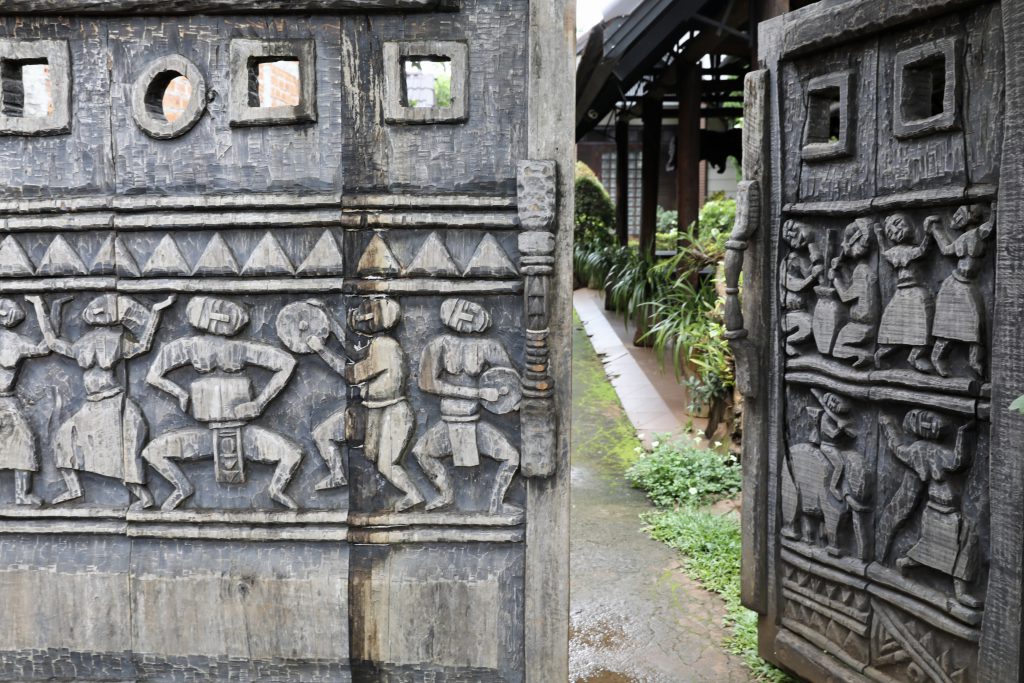Anh Dao
“Red soil paths” no longer run through the heart of the Central Highlands. Instead, Buon Ma Thuot features asphalt roads and glowing storefronts. However, amidst the hustle and bustle of this urban area, Ako D’hong remains – a village within the city. With its traditional long houses, this tranquil spot preserves the cultural essence of this red basalt land.

Ako D’hong, in the language of the E De people, means “upstream valley”. In the past, Ako D’hong was a dense, wild forest. Starting in the 1960s, when French missionaries and the village elder, Ama Hrin of M’Drăk, began cultivating the land and teaching people to establish coffee plantations, people from various villages such as M’nong, Chum Nga, and M’Drak began to settle here. Back then, there were only about two dozen households.
As an old saying states: “Good land attracts birds”. From a wild forest, Ako D’hong became a prosperous settlement. Elder Ama Hrin often organized festivals with vibrant dances and songs around the roaring fires, and the bold sound of gongs echoed from the simple long houses.
Turning onto the quiet and small road of Tran Nhat Duat, shaded by rows of trees, I reached Ako D’hong (also known as Co Thon village). Here, long houses still retain the original character of the E De people. Romantic French music resonated in the air, which was rich with the scent of coffee at Arul House, a space imbued with ethnic character. Tran Thi Chau Phuong, a slender woman in her thirties from Hoi An, who studied in Switzerland and worked for a non-governmental organization, fell in love with this land. She left her job and bustling city life and has lived in Ako D’hong for nearly a decade.

Phuong and Ms. H’len are actively preserving and developing the cultural values of the Central Highlands at Arul House.
“Ms. H’len is a memory collector,” said Phuong, speaking of Ms. H’len – a woman in her fifties, with a strong Central Highlands demeanor, bright eyes, and a deep, warm voice. Ms. H’len was born and raised in this house. When her father died, according to matrilineal traditions, Ms. H’len inherited the house. Her childhood values and memories urged her to preserve the space where she once lived and grew up. She renovated the house intuitively, collecting old wooden pillars, handwoven rattan “kapha” backpacks, gongs, mortars, pestles, large flat winnowing baskets, K’pan chairs, H’gor drums, dugout canoes, etc.
“There is nothing new in this space,” said Ms.H’len, pointing from a chandelier made from a collection of large and small kaphas stained by time to the mortar traditionally used to husk rice, but now repurposed as a plant pot.. A special feature of the long E De stilt house, mimicking the architecture of a boat, reminds descendants of the E De people’s origins as seafaring migrants. The staircase at the northern end of the house is carved with the full, round breasts of a woman and next to it is a smaller staircase for men.
Visitors can experience this peaceful, serene space, admire unique architecture, and immerse themselves in traditional activities of the E De people. They also get to taste typical E De dishes, such as beef marinated with chive bulbs smoked above a hearth and served with golden ant salt, stir-fried cassava leaves with pork greaves, Djam Trong (soup with bitter eggplant and meat), dried fish salad, etc. All these elements create a vibrant E De space.

Not far from Arul House is the home of Mr. Ama Dit. At 65 years old, his family was among those who moved to Ako D’hong in 1969 and still preserves the traditional brocade weaving craft of the E De people. Although it’s no longer the main source of the family’s income, their brocade tablecloths and bags still remind Ako D’hong of this traditional craft.
According to Mr. Ama Dit, village elder Ama H’rin established the village with the French. This was in 1956, when a 27-year-old man named Y Diem Nie, from the highlands of M’Drac (later known as Ama H’rin), was troubled by the sight of his relatives living in poverty due to their barren land, which featured more grass and wild animals than rivers and streams. In the matrilineal system of the E De people, a man’s name will change several times as he marries and has children and grandchildren.
After countless days of trekking through forests and crossing streams, when his wife and children were nearly exhausted, a spring appeared. This was the origin of Ako D’hong village. When Ama H’rin’s family arrived in this area, some French settlers were living in the Central Highlands. They established plantations, grew coffee, and excelled in their economic endeavors. The young Ama H’rin befriended some of them, and learned their language and coffee-planting techniques. In return, the French asked Ama H’Rin to translate and teach them the survival skills of the indigenous people. After learning how to plant coffee, he began to cultivate it and taught his fellow villagers.
Gradually, Ama H’rin established a foundation here. He worked and helped fellow villagers with economic activities. Not long after, the young man Y Diem Nie became the spiritual leader of Ako D’hong and was elected as the village elder before he turned 30. His house has been preserved by his descendants. Today, it serves as a cultural space, attracting tourists to the Central Highlands.
It has been over 10 years since village elder Ama H’rin passed away, but the values he created in Ako D’hong are being actively preserved by generations of people like Ms. H’len, Phuong, Mr. Ama Dit, and many others. They are working to conserve this distinctive space, which contains the culture of this highland region.










